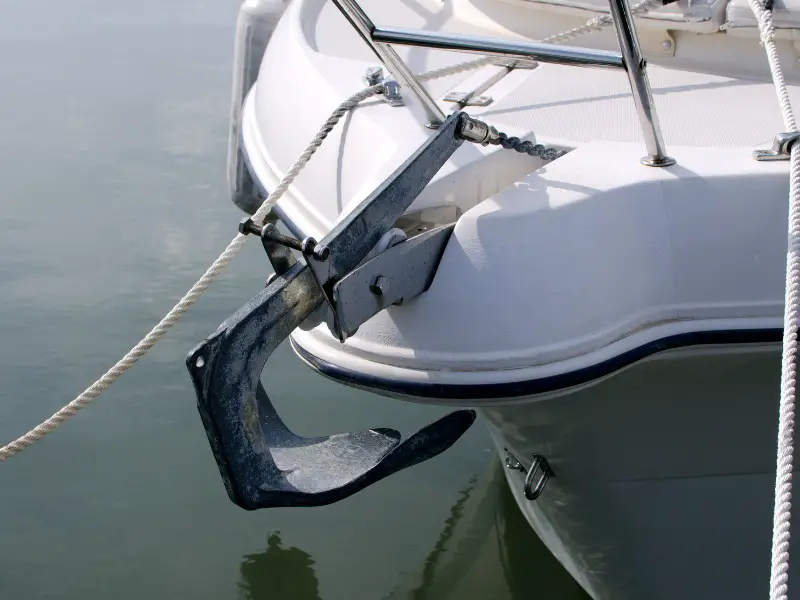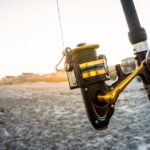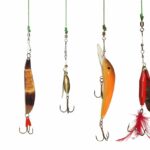Anchoring has been an essential part of maritime history. It has helped sailors keep their ships safe and explore the oceans. People often think that a heavier anchor has more holding power. This idea has been passed down from generation to generation of fishermen, leading many to believe that a big anchor is the best way to keep a boat in place.
Many fishermen and sailors believe that a heavier anchor will perform better in the water, but it’s not always the case. While a heavier anchor can offer reassurance in extreme conditions, such as strong currents, a lighter anchor can sometimes provide more benefits.
Temporary and permanent are the two main anchors you can use for fishing and sailing. A permanent anchor is called a mooring block and is hard to move. Whereas you can quickly move a temporary anchor, and you can also carry it on the boat.

Are Heavier Anchors More Effective?
Anchoring is critical to boating and sailing, ensuring vessels remain securely in place and prevent drifting. The primary function of an anchor is to grip the sea floor and maintain a firm hold despite wind, waves, and current forces. The anchor’s ability to withstand these forces is what determines its effectiveness. The history of the anchor dates back millennia.
Fishermen worldwide have believed that heavier anchors are more secure and effective. But as technology and materials for anchors have improved, there are now more factors to consider when figuring out how well heavier anchors will work.
A heavier anchor might be more suitable in some cases. Still, it all depends on the application and situation where the anchor is. For example, a heavier anchor is better for sea fishing and exploring since it will help with stability and has better-holding power. A lighter anchor is better for boats and ships that require speed.
Proper sizing is crucial when you select an anchor for your boat. An oversized anchor, irrespective of its weight, may not be set correctly and might even cause damage to the vessel. Therefore, the bottom will determine the ideal anchor. For instance, most anchors will hold well in hard sand, but few do well-finding grip in loose stones or a sandy seagrass bed.
While a heavier anchor can offer reassurance in extreme conditions, such as strong currents or rough weather, a balanced approach is vital to effective anchoring. Ultimately, a perspective highlights that modern anchors, equipped with innovative designs and materials, can deliver exceptional holding power without relying solely on weight.

The Importance Of Sizing, Design, and Holding Power
For decades, the conventional wisdom among many boaters has been that a heavier anchor is better. The argument is that a heavier anchor will provide more “weight” and holding power. In theory, the anchors added mass should enable it to penetrate the sea floor more deeply, leading to a firmer grip and better resistance against forces that could dislodge it.
One key aspect many often overlook in the “heavier is better” debate is anchor sizing. The anchor size must match the size and weight of the vessel it must secure. An oversized anchor, regardless of its weight, may not be as effective as a properly sized anchor. If an anchor is too heavy for a vessel, it may not be appropriately set or damage its deck and hardware.
Modern anchors incorporate features like multiple flukes, concave shapes, and roll bars, all of which help the anchor dig in and resist forces more efficiently. These design innovations aim to increase the anchor’s surface area and optimize its ability to effectively engage with the sea floor. Moreover, the choice of material plays a crucial role in anchor performance.
High-tensile alloys and modern composites have allowed anchor manufacturers to create lightweight, robust, and durable anchors. These anchors often outperform their heavier counterparts by providing better-holding power.
Above all else, an anchor’s holding power is the ultimate measure of its effectiveness. Whether it is a heavy or standard anchor, holding power refers to the anchor’s ability to resist forces that could cause it to drag or release from the seabed. In this context, lightweight anchors equipped with modern designs and high-tensile materials have shown remarkable performance in holding power tests, often rivaling or surpassing heavier anchors.

Benefits And Drawbacks Of A Heavy Anchor
When you use a heavier anchor, there can be several benefits in some scenarios. However, a heavy anchor will also come with drawbacks, including a higher price which can be a problem for those fishermen on a tight budget. Here are some of the benefits and disadvantages of a heavy anchor:
- Suitable for various bottoms – You can use heavy anchors with specialized designs in many bottom conditions, such as sand, rocks, and grassy areas
- Versatility – Heavy anchors work great in many conditions and depths. You can use them in the deep sea during harsh weather and still stay planted in your spot
- Difficult to handle – It can be challenging to deploy and hoist a heavy anchor, especially on a small boat
- Storage – Those fishermen with smaller boats will have trouble storing a heavier anchor since they also tend to be bigger. Small boats have less storage space, and you will need all the space you can get when out on the open water
Conclusion
With a better understanding of how anchors work, the long-held view that a heavier anchor is always better has been debunked. People used to think weight was the only factor affecting how well an anchor held. Still, new designs and materials have changed this idea since heavier anchors don’t always work with every type of boat.
Anchors that are the right size and carefully made can have a lot of holding power, no matter how heavy. These heavy anchors and better designs give sailors and boats the sense of security and confidence they want when on the open water.
- Do You Need An Indicator For Nymph Fishing? - November 16, 2023
- Fishing Safety Tips For Families - September 25, 2023
- What Is The Best Time To Night Fish At A Lake? - September 18, 2023








